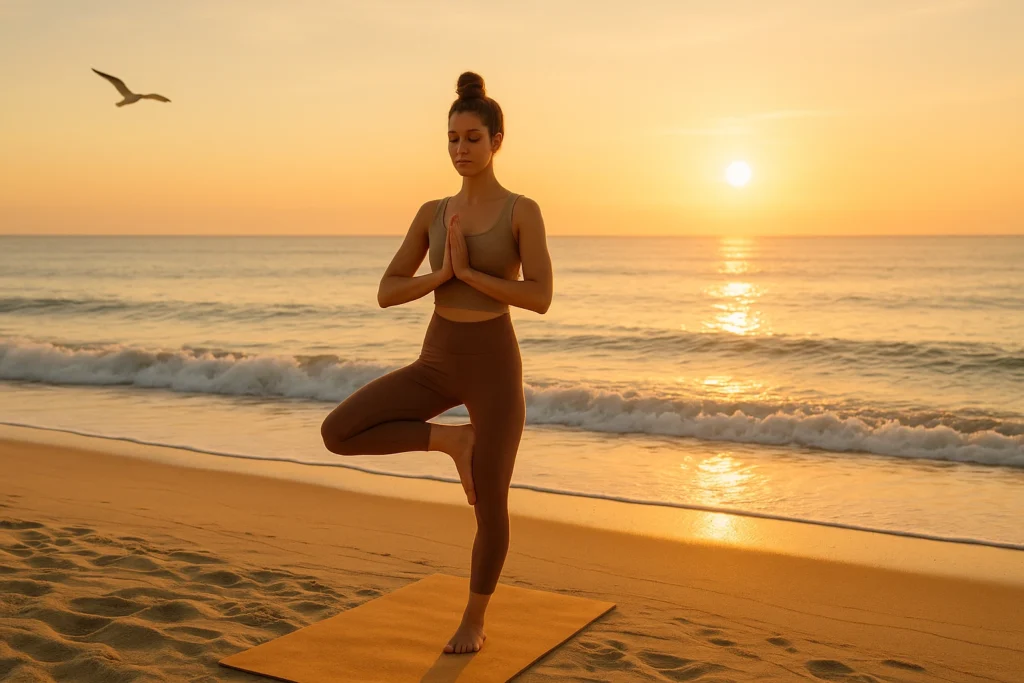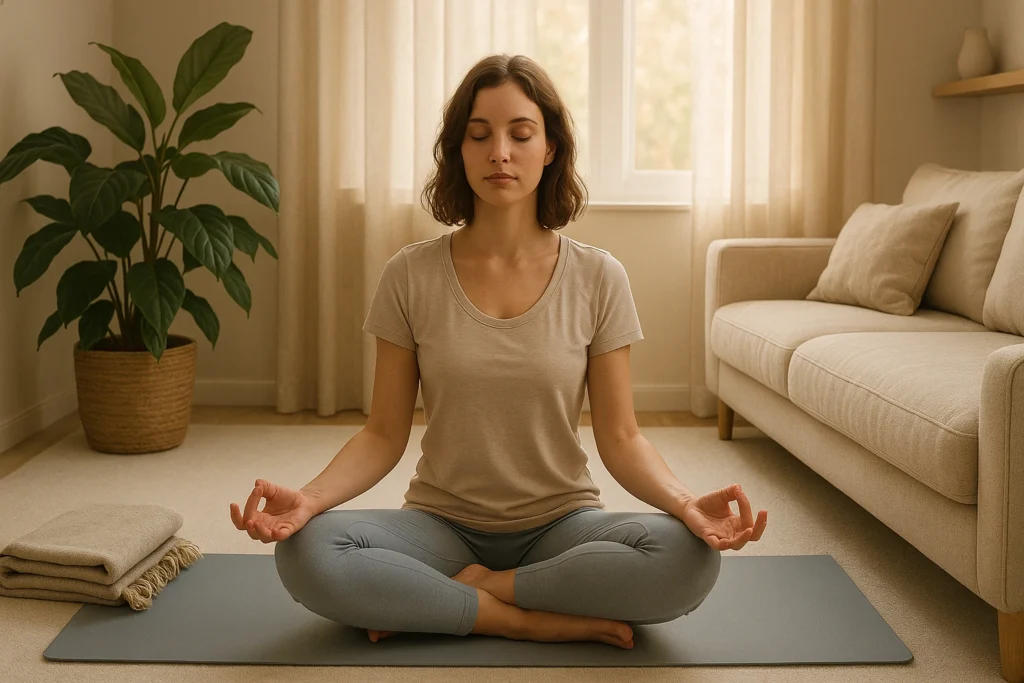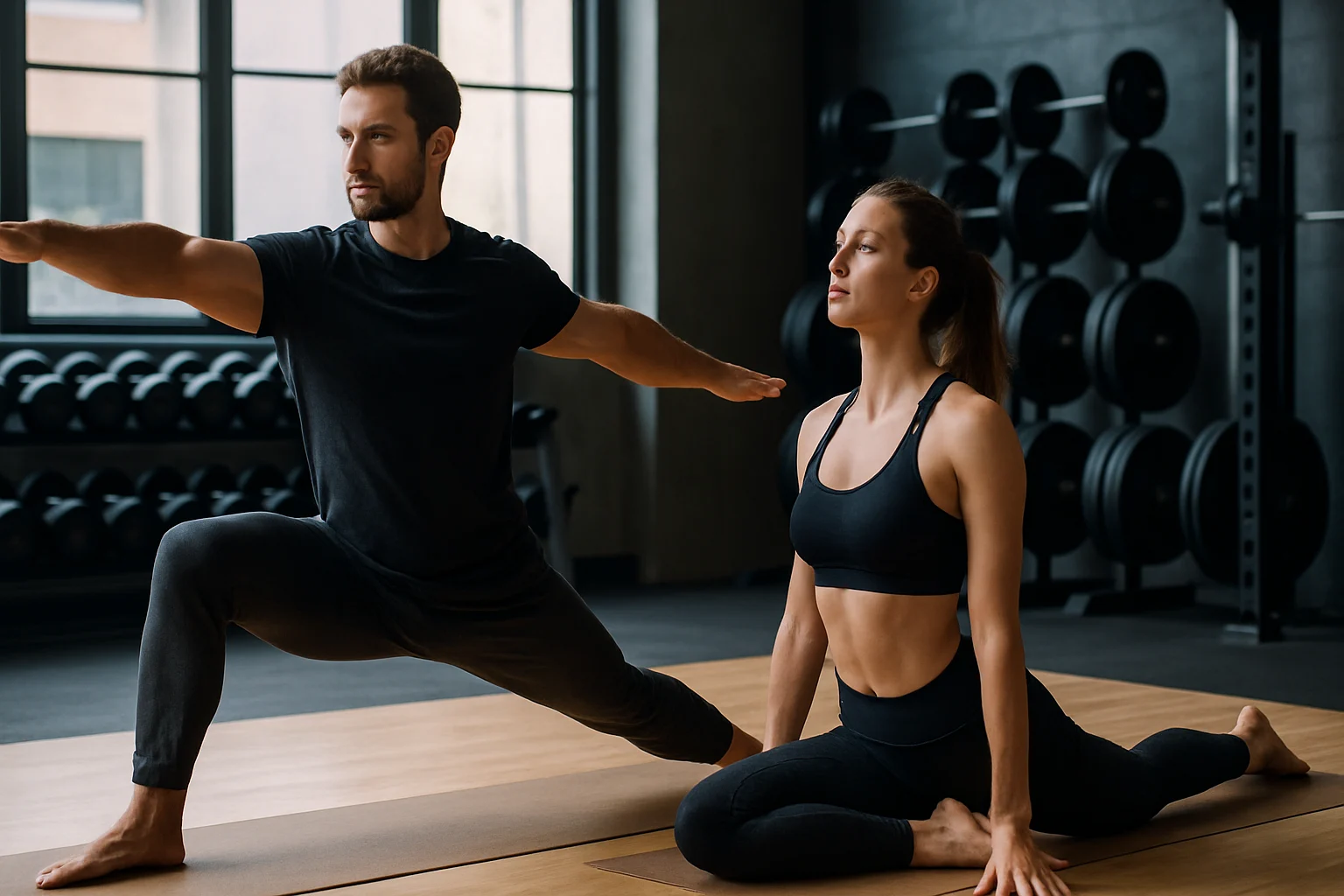
Struggling with tight hips or lingering gym injuries? 🏋️♂️ Picture yourself squatting deeper, pressing stronger, and bouncing back faster — moving mindfully and skipping anything that doesn’t feel right. Yoga for weight training can be your secret weapon for peak performance. Heavy lifts build strength and muscle, but they often leave you stiff, imbalanced, or flirting with injury. That’s where yoga steps in, helping you move freely and recover smarter. To get started with the right gear and safe stretches, dive into our complete yoga flexibility guide. Ready to take your training up a notch? Let’s jump in and see how combining yoga and weight training can unlock your best lifts. For field sports, yoga for athletes can build balance and mobility.
Power Up Your Gym Game!Table of Contents
Quick Wins: Why Yoga for Weight Training Boosts Your Lifts
- Move Better: Yoga loosens joints for deeper squats and smoother presses.
- Reduce Injury Risk: Better mobility and balance may help keep strains at bay.
- Support Recovery: Gentle stretches and breathing may ease post-workout soreness.
- Fix Imbalances: Yoga strengthens weak spots and stretches tight ones.
- Sharpen Focus: Mindfulness hones your mental game for better lifts.
This post has affiliate links. We may earn a commission. Learn more.
Why Yoga for Weight Training Works
Meet Jake, a lifter with creaky hips and sore shoulders. After a few weeks of adding short yoga sessions, his hips felt steadier, he snagged a small deadlift PR, and—more importantly—daily movement felt better. Think of training like a tune-up schedule: lifting builds horsepower, and without upkeep things get squeaky. Heavy work can tighten tissues or nudge your form off. A little yoga helps you keep moving smoothly.
Better Movement for Stronger Lifts
Pounding the weights can make muscles tight, turning squats or presses into a struggle. Stiff hips limit your squat depth, and tight shoulders make overhead lifts a pain. Harvard Health notes that regular stretching helps maintain joint mobility. Yoga for weight training can loosen those trouble spots, letting you lift bigger and move easier. This kind of strength training yoga helps keep joints healthy and your form solid — think of it as yoga for strength on accessory days.
Lower Injury Risk
Injuries are a lifter’s worst nightmare. Tight muscles, weak stabilizers, or sloppy form can lead to tweaks or nagging pain. Yoga fights back by stretching tight spots (like hamstrings) and strengthening smaller muscles (like your core). Plus, it sharpens your body’s awareness, so you catch form slip-ups before they turn into problems.
Quicker Recovery
After a grueling session, your muscles crave real recovery. 🧘♂️ Gentle yoga poses and steady breathwork may increase blood flow and help you feel less sore. It can also encourage a relaxation response that supports stress management and sleep. The result? You may wake up feeling more refreshed for your next workout.
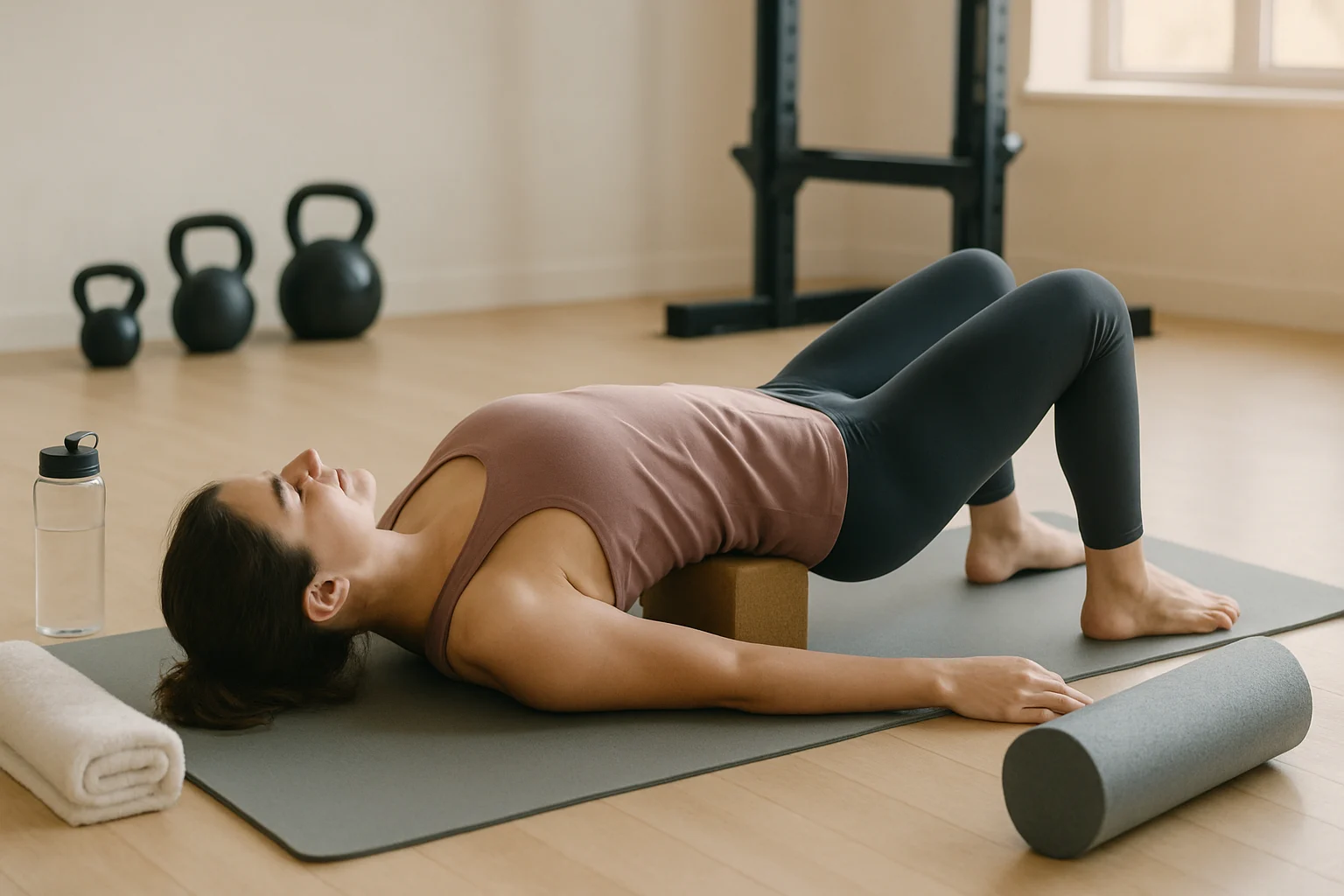
Balanced Muscles
Lifters tend to chase big muscles like pecs or quads, which can mess up your balance. Strong quads but weak hamstrings? That’s a fast track to back pain. Yoga hits the small muscles and stabilizers that lifting skips, building a body that’s strong and works like a well-oiled machine. That’s why so many athletes now include strength-building yoga in their weekly training mix.
Stronger Mental Game
Lifting takes serious mental grit. Yoga’s focus on breathing and staying present sharpens your focus for those heavy sets. Want to dial in even more? Try some mindfulness tricks. Yoga may help take the edge off, leaving you calmer and more ready for training.
Pro Tip: Deadlifts leave you a bit creaky? Spend two minutes on easy hip and spine work—enough to take the stiffness down a notch.
Must-Try Yoga for Strength Poses
Tight hips or shoulders after heavy days? These poses target the usual trouble spots for lifters. Go easy, pay attention, and skip anything that doesn’t feel right.
Strength-Building Yoga for Hips
1. Low Lunge (Anjaneyasana) 🌙
- Works: Hip flexors, quads, glutes.
- Why it helps: Loosens tight hips from squats and deadlifts, saving your lower back from strain.
- How to:
- Start in a plank or on all fours.
- Step your right foot forward, knee over ankle.
- Drop your left knee to the mat (pad it if needed).
- Ease hips forward to feel a stretch in your left hip.
- Hold 30-60 seconds, then switch sides.
- Tip for newbies: Rest hands on blocks by your front foot for balance.
2. Pigeon Pose (Eka Pada Rajakapotasana) 🕊️
- Works: Glutes, deep hip muscles.
- Why it helps: Eases glute tension, awesome for sciatica-like aches. My favorite for lower back relief.
- How to:
- From a plank, bring your right knee to your right wrist.
- Angle your right shin toward your left hip; stretch left leg back.
- Keep hips even (use a block under right hip if tight).
- Hold 1-2 minutes, then switch.
- Tip for newbies: Stack two blocks under your hips to ease in.
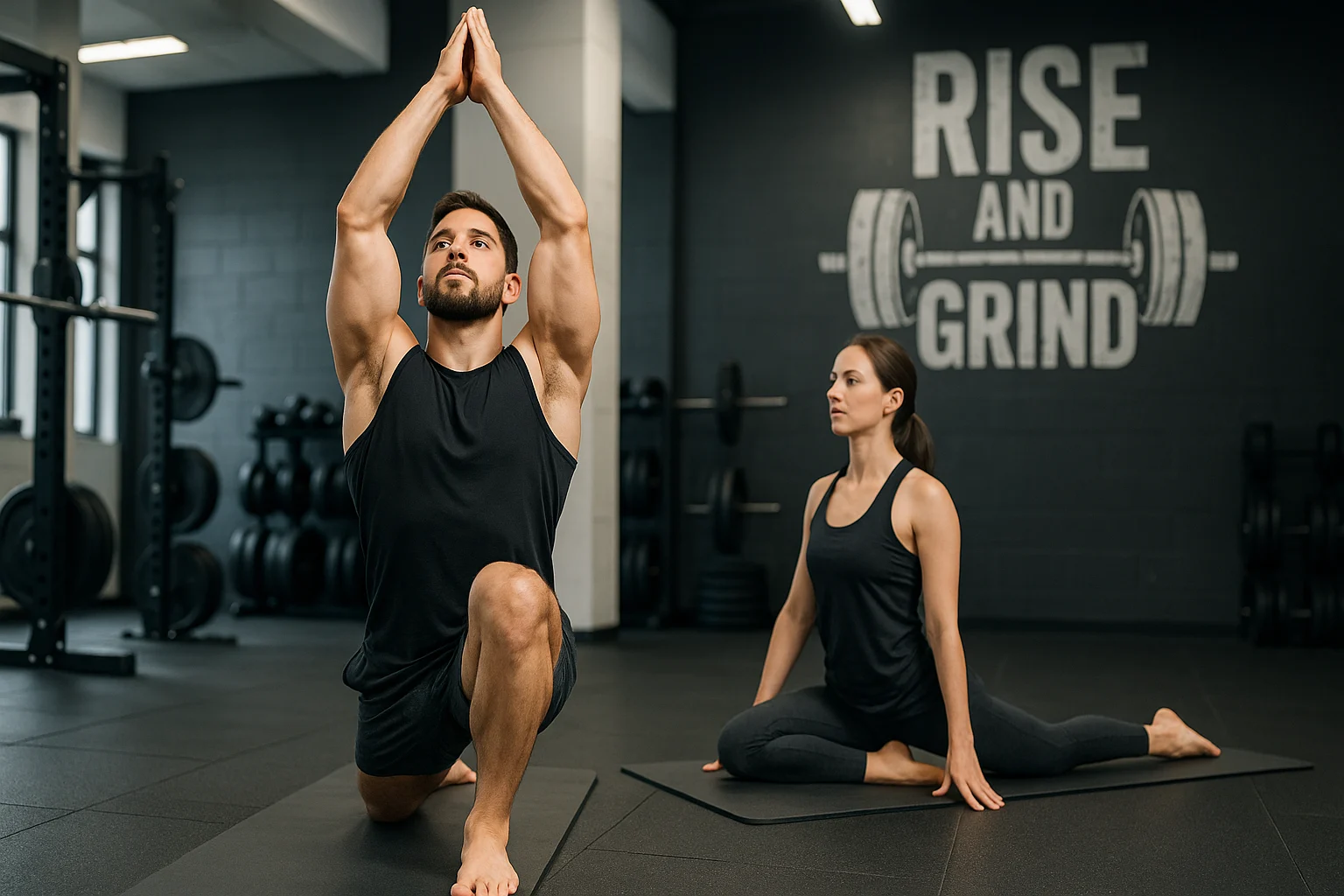
Shoulder and Spine Savers
3. Supported Bridge Pose (Setu Bandhasana) 🌉
- Works: Hamstrings, glutes, chest, spine.
- Why it helps: Opens your chest and takes pressure off your spine after heavy lifts.
- How to:
- Lie on your back, knees bent, feet hip-width apart.
- Lift hips and slide a block under your lower back.
- Rest arms by your sides; breathe deeply for 2-5 minutes.
- Lift hips to remove block, lower slowly.
- Tip for newbies: Swap the block for a folded blanket for extra comfort.
4. Thread the Needle (Parsva Balasana variation) 🧵
- Works: Shoulders, upper back, neck.
- Why it helps: Takes the edge off shoulder tightness from benching or pulling.
- How to:
- Get on all fours in tabletop position.
- Slide right arm under your body, resting shoulder and head on the mat.
- Hold 30-60 seconds, then switch sides.
- Tip for newbies: Put a towel under your shoulder for extra cushion.
Full-Body Stretches for Lifters
5. Downward-Facing Dog (Adho Mukha Svanasana) 🐕
- Works: Hamstrings, calves, shoulders, spine.
- Why it helps: Stretches your whole back body and straightens out your posture. Pair with a yoga strap for deeper stretches.
- How to:
- Start on hands and knees, fingers spread wide.
- Push hips up and back to form an upside-down “V.”
- Press heels toward the floor; hold for 5-10 breaths.
- Tip for newbies: Bend knees slightly if your hamstrings feel tight.
6. Child’s Pose (Balasana) 👶
- Works: Hips, thighs, back.
- Why it helps: A chill stretch to wind down after a tough workout.
- How to:
- Kneel, big toes together, knees wide or close.
- Sit back toward heels and fold forward.
- Rest forehead on the mat; hold as long as you like.
- Tip for newbies: Use a bolster under your chest for support.
7. Standing Forward Fold (Uttanasana) 🙏
- Targets: Hamstrings, calves, lower back.
- Why it’s great: Stretches tight hamstrings and gives your spine room to breathe.
- How to do it:
- Stand with feet hip-width apart.
- Hinge forward at your hips with a gentle knee bend.
- Hold 30–60 seconds, then roll up slowly.
- Beginner Tip: Rest your hands on blocks for support and less strain.
How to Add Yoga for Weight Training to Your Routine
You don’t need to turn into a full-time yogi to see benefits. Even short sessions can support performance. Strength-building yoga styles like Vinyasa or Hatha fit easily into a lifter’s week without overtaxing recovery. On rest days, Yin yoga is useful for longer, gentler stretches, while Vinyasa flows can warm you up before a workout. Pair yoga for weight training with restorative yoga poses or foam rolling to support recovery. Making time for yoga stretches for weight training recovery helps your muscles stay flexible and strong.
- Pre-Workout (5–10 minutes): Dynamic poses like Low Lunge or Cat-Cow to wake up joints.
- Post-Workout (10–20 minutes): Relax into Child’s Pose or Pigeon for a deeper stretch.
- Rest Day (20–60 minutes): Go longer with Yin or Hatha for total-body release.
- Listen Up: Feeling stiff? Stretch more. Wiped out? Ease up. Small steps win.
Yoga & Lifting Balance Checker
Find out how well you’re mixing yoga with lifting to hit peak performance!
Your Yoga and Lifting Questions Answered
Wrap-Up
Combining yoga with strength training isn’t about giving one up — it’s about creating balance. Pair your program with yoga for strength a couple of times per week. Add yoga to your routine and you may lift with better form, support recovery, and build a body that’s strong and mobile. Even just a few sessions of yoga for weight training each week can help your training feel safer and stronger. With yoga for athletes, you’ll develop more strength, stability, and confidence. Roll out your mat, move mindfully, and notice how your lifts progress. 💪
